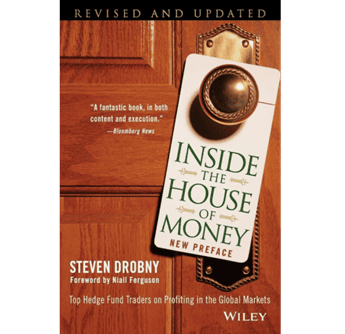
Van Tharp's Trade Your Way to Financial Freedom is more than a collection of techniques. It is a blueprint that places the trader at the centre of system design. Van Tharp asks readers to examine beliefs, quantify risk and construct personalised systems that match market reality.
The central claim of the book is simple yet profound. Success in trading depends less on prediction and more on psychology, position sizing and system design.
Strategic Overview of Trade Your Way to Financial Freedom
Van Tharp wrote for traders who seek longevity and consistency. He reframes trading as a craft that blends psychology, mathematics and disciplined process. Rather than offering a single profitable indicator, he provides a methodological framework.
Readers learn to define objectives, measure edge and design rules that are robust across market environments. The book's enduring appeal is its insistence that the trader must change their inner software before changing external tactics.
Psychological Foundations in Trade Your Way to Financial Freedom
1. Understanding the Trader's Mindset as the Ultimate Edge
Tharp argues that the trader's belief system is the single most influential factor in performance. Traders must assess their psychological profile, identify limiting beliefs and develop a mental structure that supports consistent decision making. This work includes honest self appraisal, structured journalling and deliberate practice in stressful conditions.
2. The Role of Cognitive Biases in Trading Errors
Cognitive biases quietly erode returns. Confirmation bias, recency bias and loss aversion distort perception and lead to inconsistent execution. Tharp recommends concrete countermeasures such as pre defined rules, checklists, and behavioural experiments that expose automatic reactions. The aim is to convert impulsive responses into trained, rule based actions.
Position Sizing Methodologies in Trade Your Way to Financial Freedom

1. Position Sizing as the Engine of Consistent Performance
Van Tharp elevates position sizing above entry signals. He teaches that the amount risked on each trade determines drawdowns, compounding and survivability. By controlling risk per trade, traders maintain optionality and avoid emotional collapse during inevitable losing periods.
2. Optimal F and Risk Units
Tharp introduces the concept of Optimal F and the unit based approach to sizing. Traders calculate the size of a risk unit relative to account equity and use risk units consistently. This disciplined allocation changes the risk profile of an entire approach more than marginal improvements in signal accuracy.
Position Sizing Examples and Effects on Equity
| Example Scenario |
Risk Per Trade |
Number of Consecutive Losses |
Approximate Drawdown Effect |
Observations |
| Conservative plan |
0.5% of equity |
10 |
Small drawdown that preserves capital |
Supports steady compounding and psychological comfort |
| Moderate plan |
1.5% of equity |
10 |
Noticeable drawdown that is manageable |
Balances growth and risk control |
| Aggressive plan |
4% of equity |
10 |
Large drawdown that can threaten account |
Requires strong conviction and psychological resilience |
System Development Principles in Trade Your Way to Financial Freedom

1. Building a Personalised Trading System Grounded in Objectives
Tharp emphasises that a system begins with clear objectives. Traders must articulate time horizon, return targets, acceptable drawdown and liquidity constraints. These objectives become constraints that shape entries, exits and sizing.
2. Essential Components of a High Quality Trading System
A robust system contains specific entry rules, explicit exit rules, market type filters and risk control measures. Ambiguity is the enemy. Rules that can be tested and repeated under various conditions yield reliable performance assessments.
3. Testing and Refining a Trading System with Statistical Rigor
Tharp advocates rigorous testing which includes out of sample tests, walk forward analysis and Monte Carlo simulation. Robust systems demonstrate stable expectancy across different market slices rather than spectacular backtested results confined to a single period.
Market Types and Strategy Alignment in Trade Your Way to Financial Freedom
1. Identifying Distinct Market Types Accurately
Tharp categorises markets into distinct types such as directional quiet, directional volatile, sideways quiet and sideways volatile. Accurate classification informs whether a momentum approach, mean reversion method or volatility based strategy is appropriate.
2. Aligning Trading Systems with Market Conditions
Matching the system to the prevailing market type improves expectancy. A trend following system will falter in a sideways low volatility market while a mean reversion system will struggle in a trending environment. Tharp stresses switching systems or standing aside when market type and system design conflict.
Market Type and Strategy Alignment
| Market Type |
Typical Characteristics |
Strategy Types That Suit It |
Practical Consideration |
| Directional Quiet |
Clear trend, low noise |
Trend following, position trading |
Use larger position sizes with tight risk controls |
| Directional Volatile |
Strong trend with wide swings |
Trend following with volatility filters |
Expect larger drawdowns and wider stops |
| Sideways Quiet |
Range bound, low volatility |
Range trading, mean reversion |
Small targets and tight risk per trade work best |
| Sideways Volatile |
Frequent false breakouts |
Short term mean reversion, volatility harvesting |
Reduce size and increase adaptive filters |
Risk Management Architecture in Trade Your Way to Financial Freedom
1. The Mathematics of Risk and Expectancy
Tharp teaches that expectancy and variance are the bread and butter of performance measurement. Expectancy measures average outcome per trade, while variance dictates the path the equity curve will take. Combining a positive expectancy with prudent sizing produces durable growth.
2. Designing Risk Protocols That Prioritise Longevity
Longevity is the primary objective. Protocols include limits for risk per trade, maximum acceptable drawdown and rules for scaling in and out. Tharp recommends conservative portfolio level constraints that prevent catastrophic losses and preserve the psychological capacity to trade.
Performance Measurement and Continuous Improvement

1. Evaluating Results Through Tharp's Proprietary Metrics
Van Tharp introduces and adapts metrics that capture both edge and consistency. R multiples, system quality numbers and consistency scores help traders see whether a system produces a reliable distribution of outcomes. These metrics are more informative than raw win rates.
2. Developing a Trader Improvement Plan
Improvement requires structured feedback loops. Daily logs, weekly reviews and fortnightly deeper analyses reveal behavioural patterns and system weaknesses. The trader then turns observations into experiments and rules to correct undesirable tendencies.
Case Studies That Reflect Principles in Trade Your Way to Financial Freedom
1. Trend Following Example With Position Sizing Impact
A case study illustrates how small conservative risk per trade grows capital slowly but steadily. The same rule set with larger sizes produces faster growth but significantly deeper drawdowns. The example teaches that position sizing is the practical lever that most affects real world outcomes.
2. Market Type Rotation System Demonstration
A second example shows a rotation system that switches between trend following and mean reversion depending on market classification. The system reduces drawdowns by avoiding mismatches and increases long term expectancy through complementary strategies.
Practical Implementation Guide for Readers
Step by Step Blueprint to Apply Van Tharp's Framework
Define personal objectives and constraints.
Assess psychological profile and beliefs that influence risk taking.
Choose market universe and time frames.
Design simple entry and exit rules.
Determine risk units and position sizing rules.
Backtest with robust validation and walk forward testing.
Start small and keep detailed records.
Iterate based on performance and behavioural feedback.
Tools, Templates and Habit Structures for Everyday Execution
Adopt templates for trade journalling, checklists for pre trade decisions and weekly review schedules. Habits such as end of day reflection and monthly system stress tests cultivate the discipline that sustains performance.
Frequently Asked Questions
1. What is the core message of Trade Your Way to Financial Freedom?
Van Tharp teaches that consistent trading success depends on personalised system design, disciplined position sizing and self mastery. The book shows how to align psychology with measurable risk controls to achieve sustainable performance.
2. How important is psychology compared with technical rules?
Psychology is foundational. Without consistent emotions and disciplined execution, even excellent rules fail. Tharp emphasises mental training, belief assessment and structured practice as essential complements to technical methods.
3. Can the position sizing methods be applied by beginners?
Yes. Position sizing is accessible and often more impactful than complex indicators. Beginners should start with conservative risk units and focus on consistency while they learn system design and emotional control.
4. How does one choose which market type framework to use?
Begin by measuring volatility and directional tendency. Use objective filters to classify market type and then apply strategies that historically suit that environment. Regular reassessment is necessary as markets evolve.
5. Will applying Tharp's methods guarantee profits for all traders?
No method guarantees profits. Tharp provides a framework that improves probability of long term success by focusing on risk control, psychology and robust testing. Discipline and adaptation are required to translate theory into results.
Closing Thoughts
Trade Your Way to Financial Freedom is a practical manifesto for traders who want control over their outcomes. Van Tharp does not promise quick riches. He offers a process that replaces hope with measurement, guesswork with rules and impulsive action with disciplined practice.
Traders who embrace his approach will find that the most valuable asset is the ability to remain in the game and to compound gains reliably over time.
Disclaimer: This material is for general information purposes only and is not intended as (and should not be considered to be) financial, investment or other advice on which reliance should be placed. No opinion given in the material constitutes a recommendation by EBC or the author that any particular investment, security, transaction or investment strategy is suitable for any specific person.

























